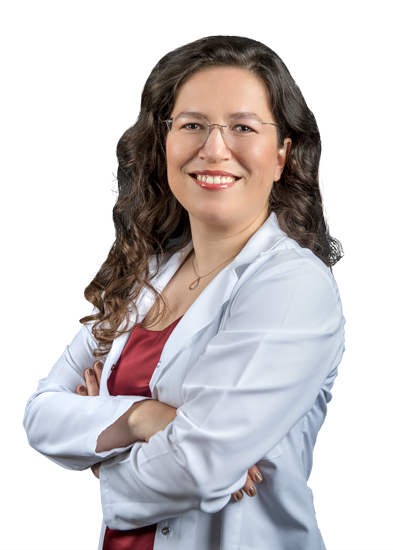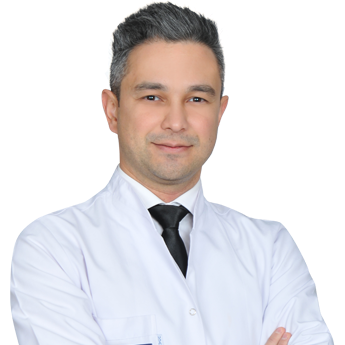PHYSICAL THERAPY AND REHABILITATION

Physical Therapy and Rehabilitation is a speciality that deals with the diagnosis, treatment and preventive treatment of congenital or acquired, muscular, nervous and skeletal system problems, as well as neurological diseases, orthopedic problems, hernia, paralysis, trauma, pain, calcification, dysfunctions that develop after surgeries and movement limitations due to other diseases. Physical therapy and rehabilitation, which is used in the treatment of many bone and muscle-related diseases, is a treatment method that can vary according to the person.
The aim of the treatment is to eliminate the disorder that occurs as a result of different diseases and injuries and the situation that causes the patient's quality of life to decrease, to increase the potential for independent movement, to eliminate existing pain and complaints. In addition, rehabilitation techniques are also used to eliminate the limitation of movement in patients after injuries and injuries that occur during sports activities. The aim of rehabilitation studies carried out with physical therapy is to maintain the patient's physiological, social, spiritual and occupational independence. Rehabilitation processes often last longer than physical therapy.
Who is a Physical Therapist and Physiotherapist?
Physicians of the physical therapy and rehabilitation department, abbreviated as FTR, specialise in physical medicine and rehabilitation for 4 years after 6 years of medical faculty education. In addition to the diagnosis and treatment of many diseases related to the musculoskeletal system, it plays a role in the treatment of patients of these departments by working multidisciplinary with other medical departments. It enables patients with disorders such as pain, limitation in joint movements, loss of muscle strength, balance, posture and walking disorders to return to their routine lives.
Physiotherapists are people who receive a 4-year undergraduate education in the physical therapy and rehabilitation department of universities. They are certified health professionals who apply the treatment programme arranged by the physical therapist to improve physical limitations due to disease, injury and advanced age.
Diseases that we treat in the Department of Physical Therapy and Rehabilitation:
Pain Problems
Pain in the musculoskeletal system in the body such as neck, waist, back, foot, knee, etc. can be treated with physical therapy and rehabilitation methods. Acute pains caused by tissue damage due to disease or trauma are in the speciality of this unit. Chronic pain that persists neurologically or psychologically enters into a long-term treatment process.
Sports Injuries
Muscle injuries, meniscus, fractures and other injuries that occur during sports can be treated surgically or can be restored with physical therapy and rehabilitation. If the patient needs surgery, physiotherapy is important after this process. In order for the problematic area to regain its former health, it is necessary to do exercises under the supervision of a doctor and not to interrupt them.
Parkinson's
Parkinson's disease, which is seen especially in advanced ages, occurs as a result of a decrease in dopamine cells. In addition to the medications used under the control of a neurologist, the patient should also exercise regularly. It is aimed to increase the patient's mobility and improve the quality of life with physical therapy and rehabilitation to be applied to this disease, which has symptoms such as tremor in the hands, difficulty walking, speech impairment, etc.
Rheumatic Diseases
Rheumatism, which is used to describe aches and pains felt around muscles, joints or bones, is not a single disease. There are hundreds of diseases within rheumatism. Inflammatory and non-inflammatory rheumatism includes various diseases such as osteoporosis, joint rheumatism, heel spurs, tennis and golfer's elbow, calcific tendinitis, calcifications, shoulder impingement syndromes, shoulder muscle tears, soft tissue rheumatism, gout, Mediterranean fever, connective tissue diseases, rheumatoid arthritis, acute joint rheumatism. Swelling, difficulty in using the joint, constant pain, increased temperature or redness are among the symptoms of rheumatic diseases. Depending on the severity of the disease, medication can be used, and many rheumatic diseases are treated with physical therapy and rehabilitation.
Fractures
Sprains, fractures or dislocations cause various complaints in the patient. After symptoms such as inability to move, swelling, pain, bruising, the damaged area can be treated with plaster or sometimes surgical intervention can be applied. After the treatment of the damaged area with these methods, physical therapy and rehabilitation are required. Since muscle weakness and weakness occur in areas that remain immobile for a long time, exercises and different methods are used to help the patient regain his/her former health.
Neck and Lumbar Hernia
Loss of integrity of the discs between the vertebrae leads to hernia. These hernias that occur in the neck and waist region are caused by wrong movement, trauma, accident, calcification and stress. Other causes of herniated discs include bone weakness with age, excess weight gain and pregnancy. In addition to drug treatment, physiotherapy and rehabilitation is a common treatment method for hernias. However, these methods vary according to the level of the disease. Progressive hernias are sometimes treated with surgical operations.
Lymphoedema
Lymphedema is congenital (primary) or acquired (secondary) abnormal collection of lymph fluid in the tissue and fluid accumulation as a result of insufficiency in the lymphatic system. In this case, manual lymph drainage is among the other application areas of the physical therapy and rehabilitation department. With manual lymph drainage, the lymphatic system is restored by activating the lymphatic pathways whose fluid flow has slowed down. Afterwards, bandaging method is applied. Pressure garment can be applied when necessary.
Orthopaedic Rehabilitation
Rehabilitation after many soft tissue injuries/surgeries such as ligament injuries, muscle-tendon strains, fractures-dislocations, muscle tears, sprains, meniscus tears, physical therapy and exercises applied after arthroscopic or open surgery are within the scope of orthopaedic rehabilitation.
It is aimed to restore normal movements and functions, lost muscle strength and balance to the joints and muscles related to the injury with physical therapy and exercise programmes.
Hand Rehabilitation
In hand diseases such as tendon - nerve injuries, an individual-specific, appropriate rehabilitation programme is organised in a short time after surgical repair performed by orthopaedics and traumatology or plastic and reconstructive surgery specialists to restore the functions of the hand.
Treatments Applied in Physical Therapy and Rehabilitation Programme:
1.Basic Applications
a) Heat Applications
Superficial heaters such as paraffin, infaruj and hot packs
Local cryotherapy such as cold pack-cold
Ultrasound as a deep heater
Hot and cold therapies
b) Electric Current Applications
Low and medium frequency electrical currents such as TENS, diadynamics and interferens
Neuro-muscular electrical stimulation (Faradi, Compex etc.)
Iontophoresis-electric drug administration through the skin
c) Light Applications
Laser
Infrared
d) Mechanical Applications
Exercises with and without equipment
Stretching exercises
Mobilisation
Reinforcement
Proprioceptive exercises
Home exercise programme
CPM (Continuous passive movement exercise)
Posture exercise
Breathing exercises
Scoliosis exercises
Classic massage
Traction therapy
Pneumatic compression application-Lymphedema
Whirpool - whirlpool bath
Classical massage and tissue massage
2.Other Applications
Intra-articular injections
Sore spot injections
ESWT
Manual therapy
Botox applications
Kinesiobanding
Orthotic applications
Work-occupation / occupation applications






